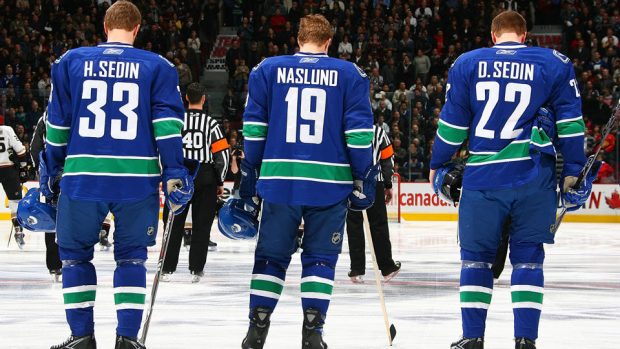The Vancouver Canucks have now struggled in the National Hockey League (NHL) for 47 years to win the prized Stanley Cup. The team came close three times, in 1982, 1994, and most recently, 2011, with the last two resulting in city riots. Why does it appear that the Canucks never seem to reach the prize? The problem is not a matter of luck, it is a matter of poor organizational behavior within the Canucks team.
I recently read Patrick Johnston’s article in the Province about former Canucks player David Booth still having frequent nightmares about his former coach, John Tortorella, years after they both had left the organization. This example reminded me of the Five-Stage Model for team formation in Chapter 6 of Nancy Langton’s Organizational Behaviour textbook. To me, the fact that David Booth still detests his former coach demonstrates that the Canucks have never actually left the storming stage, where team members are constantly in conflict. For a team to win the Stanley Cup, they must have reached the performance stage where team members have sorted out roles, so they can all contribute at the highest ability to the common team goal.
While this example of team storming may account for the Canucks’ lack of success in recent years, I believe that Page 218 of the OB textbook provides a better explanation for why the Canucks have lacked success throughout their 47-year history. The problem is that the Canucks management has relied too heavily on their aging team leaders as opposed to building a young, well-balanced team. Because of Canucks management regularly relying on their aging leaders to lead the otherwise mediocre teams, aged leaders such as Trevor Linden who played with the club until he was 38, Markus Naslund who played until 35, Roberto Luongo who played until 35, and the Sedins who are still with the club at age 36 end up being the only notable team members throughout team history while the others remain largely unnoticed.
I believe that the problem of the Canucks is a result of the poor team building by team management. The team hires coaches and players with conflicting interests, and the team relies too heavily on the contributions of aging veterans while neglecting the contributions of young stars (example being the trading of future goaltending star Cory Schneider away to the New Jersey Devils). Although this method of team building has led to developed the legacies of several Canucks hockey legends, this method, in my opinion, is an ineffective way of building a Stanley Cup contending team.
Word Count: 427
Sources:
Langton, Robbins, Judge, Organizational Behaviour, 7th edition, p. 128
“Henrik Sedin.” Wikipedia. Wikimedia Foundation, n.d. Web. 04 Feb. 2017.
Johnston, Patrick. “Does David Booth still have nightmares of John Tortorella?” The Province. N.p., 16 July 2016. Web. 04 Feb. 2017.
“Markus Näslund.” Wikipedia. Wikimedia Foundation, n.d. Web. 04 Feb. 2017.
“Roberto Luongo.” Wikipedia. Wikimedia Foundation, n.d. Web. 04 Feb. 2017.
“Trevor Linden.” Wikipedia. Wikimedia Foundation, n.d. Web. 04 Feb. 2017.
Image Source:
http://s227.photobucket.com/user/Meg_8_2007/media/Markus%20Naslund/63MarkusNaslundwasagreatmentortoHenrikandDanielSedinwhentheycamefromSwedentoVancouver.jpg.html
